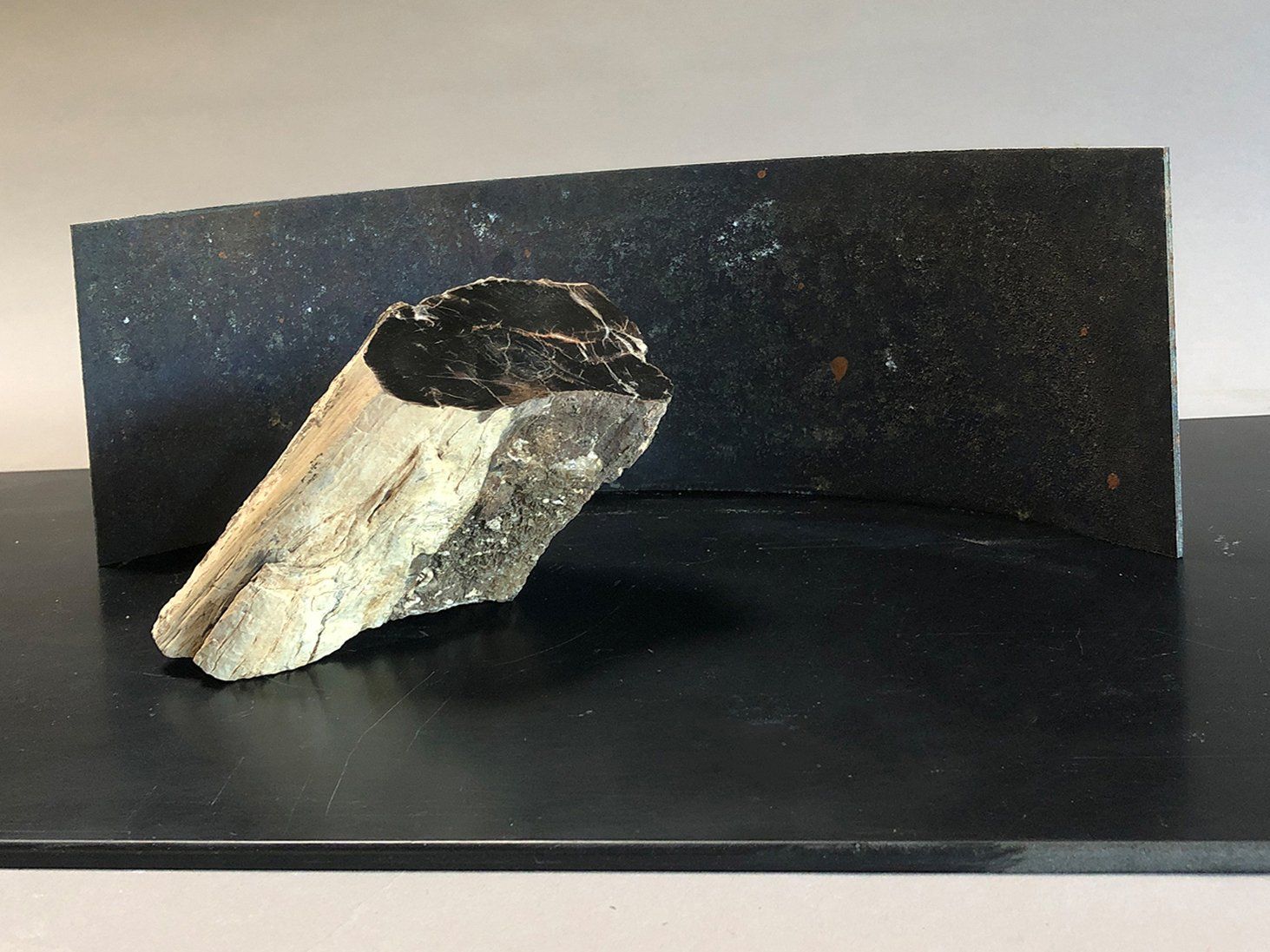Untitled
By Richard Turner
Every stone has a story to tell. Viewing stones have two stories. The primary narrative, which we read in the color, texture, weight, and form of the stone itself, is the story of its formation, erosion, and, in some cases, migration through layers of the earth’s core or across the surface of the planet. The secondary, and much shorter narrative, is the history of the stone’s discovery and its journey from one collection to the next. The record of a stone’s ownership is known as its provenance. This documentation, while valuable in and of itself, does not necessarily reveal the most interesting tales of a stone’s life as it passes from hand to hand.
This is a piece of petrified wood. Although it is not from the Petrified Forest national park in northeast Arizona, it can serve as an entrée to stories about stones taken from the site by visitors. Local legend has it that purloined specimens of petrified wood have brought nothing but bad luck to the hapless tourists who have insisted on taking souvenirs along with them despite park signage prohibiting collecting. In their book Bad Luck, Hot Rocks, Ryan Thompson and Phil Orr pair images of rocks returned to the park’s ranger station with “conscience letters” that include stories of misfortune attributed to the stolen rocks. Cats with cancer, car trouble, deaths in the family, and broken bones are all ascribed to the theft of the mineral specimens. Culprits return the stones in hopes of lifting the so-called curse. If stories such as these were to become an accepted part of a stone’s provenance, the routine of record-keeping might be less of a chore and more of a delight.


